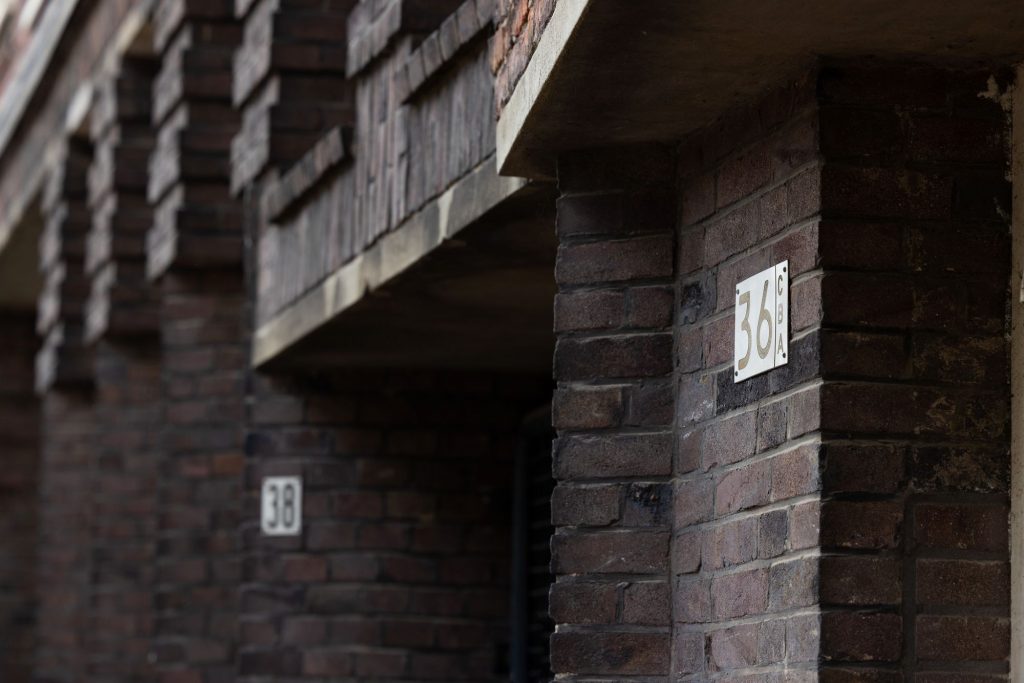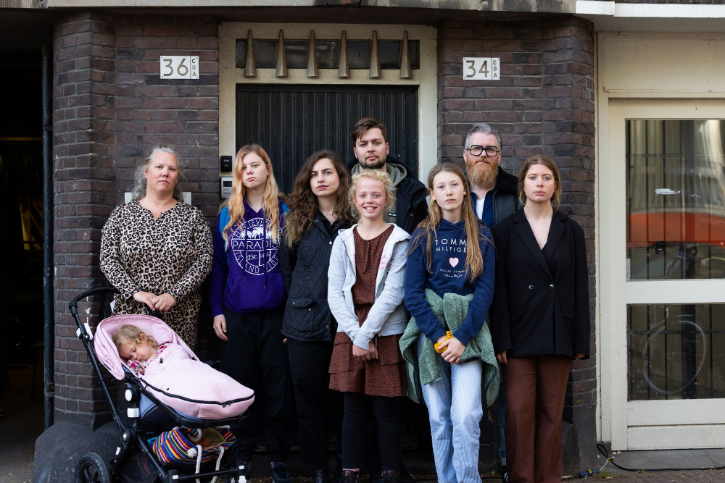We go beyond the boundaries of life and death
"Moving, intense, and incredibly poignant." This is how the commemoration A Street Full of Life is described by both spectators and participants. Never before has a commemoration taken place on May 4 that is so close to, or actually in the middle of, life. A unique commemoration, in which the war victims are brought back to life, and are not only given a story, but also a face in the now.
At 5:00 p.m., it is then
Former Mayor Job Cohen proudly presents a totally innovative May 4 commemoration called: A Street Full of Life.
In the Nieuwe Uilenburgerstraat, in the heart of the former Jewish neighborhood. The street is filled. A stage is ready to be stepped on, saxophonist Kees ten Dam has just done his final sound check, passing cars and cyclists stop, and local residents hang out their windows to watch what is happening below.
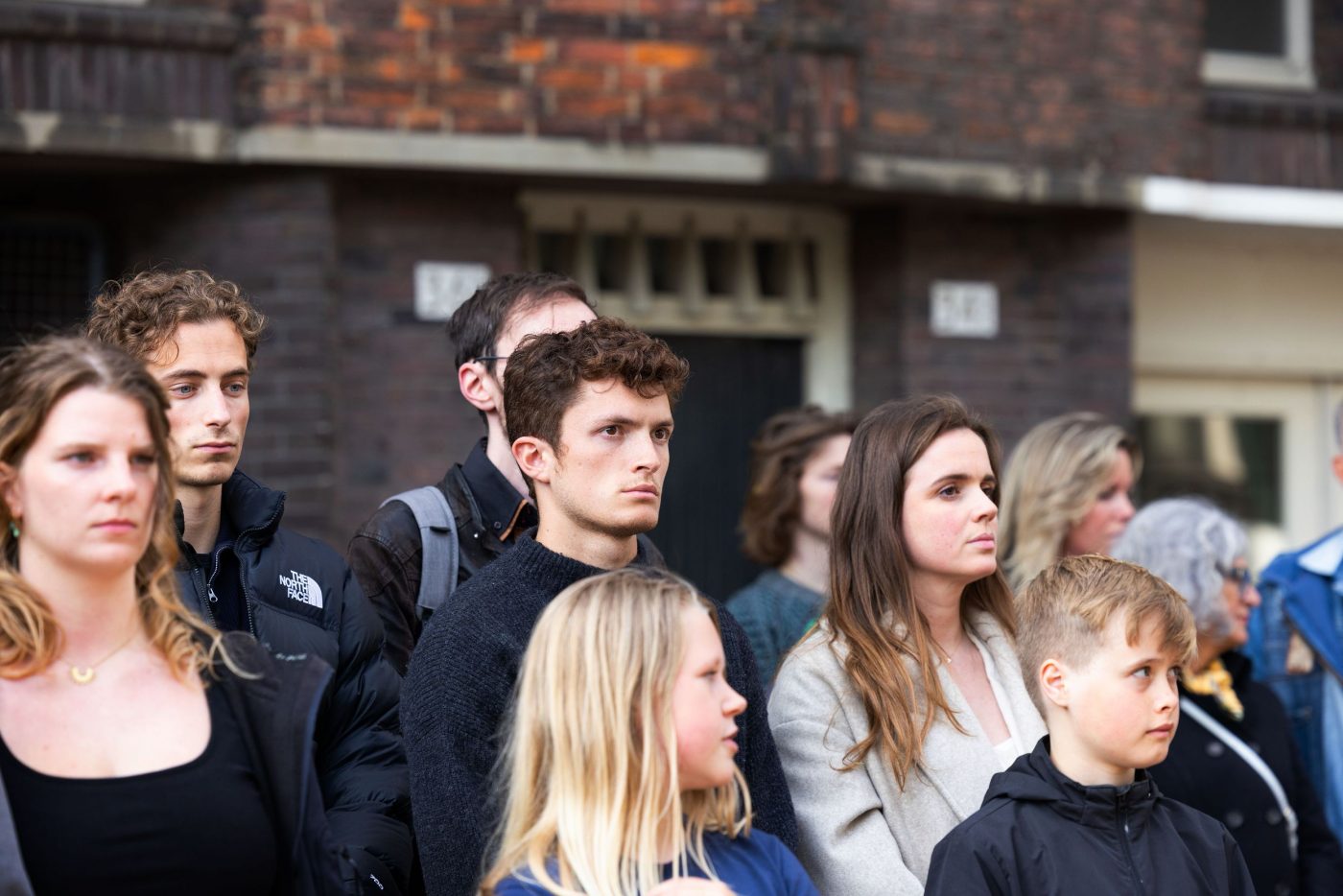
374 people were deported from this one street in World War II. Three hundred and seventy-four. And that's just from one street. A total of 60,000 people were taken from their homes the place where they felt safe and protected. Never to return. But today some of those disappeared people are being made visible again, brought back for just a moment. For today, not only will the stories of the residents of Nieuwe Uilenburgerstraat numbers 34 and 36 be told, but they will also be represented in physical presence by volunteers. No black and white images, or just names on a monument: but presented by real, living people, of the same age and gender. Making it not only clear, but also truly visible and tangible, which lives were lost.

The real stories
Then actors Saskia Temmink and Thomas de Bres climb onto the stage, and
begin to tell about the former occupants of the four floors of
the two buildings behind them. The Appelboom family lived here with nine people.
Father Jacob Appelboom mother Rachel Brilleman and their children Isaac, Betje,
Rebecca, Hartog, Sara, Aaltje and Sientje where nine people, father,
mother and children, crossed the street to stand in front of the house. Many
children's feet were always audible in the stairwell, to 3 high.
All of the residents are told about who they are and what they did; a real
insight into their lives. Not life as a war victim, but in their
life before that. When they were still full of expectations, hopes and dreams in life.
life. Then is told how the family was rounded up, and their house was
looted by order of the ERR: an organization that transported household effects to Germany.
transported. Then the contents list of the Appelboom family is
read aloud, all the items that were taken from their home. Cabinets, cribs,
cribs. All the information read out about the residents is real,
taken from archives. Whereupon Saskia concludes with: The entire Appelboom family
is murdered in 1942 and 1943, none of them survives
When all the stories about the total of forty residents of the properties have been told
are told, all those who did not survive the war walk away one by one, called out by
name walk away. And all those present can see how many occupants remain
standing, those who survived with very good luck: as many as five.
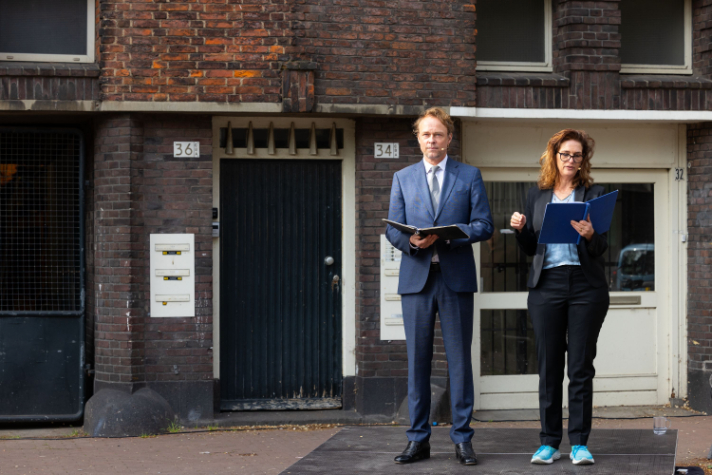
Sadness, tears and anger
Tears flowed. Both among bystanders, and among the participating
representative volunteers. One of them is Eva ( Eva is one of the
current residents of number 36, and represented 51-year-old Sarah Pots, who
lived in her home with her husband Bernard and their six children. Eva: I
thought it was wonderful, but also incredibly intense to do this. When I moved into
this street I already knew that in this neighborhood there were a lot of Jews
had been deported during the war. There are memorial stones in the street.
street. But I had no idea who these people were. When I found out that
in my house lived a woman of exactly my age, who had been
taken away and didn't survive, that hit me incredibly hard. Suddenly
it was no longer abstract, but I heard all kinds of things about this woman and her
family. I try to imagine how they all lived in the
house I live in now. It all touches me immensely. Also because it's not at all
not that long ago. And there is still so much racism and anti-Semitism in the
world. That makes me angry too: that it still exists. So I
had to cry extremely hard for a moment. But that's allowed on a day like this, right?
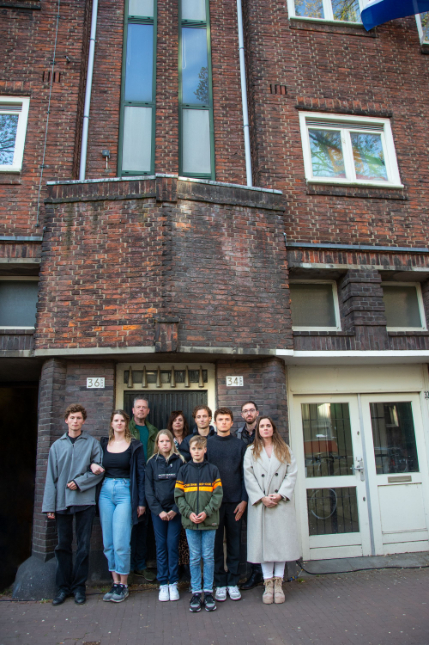
Another tearful participant is Fred ( who is here with his daughter Terry ( and granddaughter Joy (. My mother was in the Resistance during the war he tells. That has always made a big impression on me. That's why I thought it was a great opportunity to participate in this: as a tribute to her, and to all war victims. I love the way this commemoration is designed. Showing it this way really brings it to life. Both the people and their stories. And then the saxophone music, well, it really gives me goose bumps.
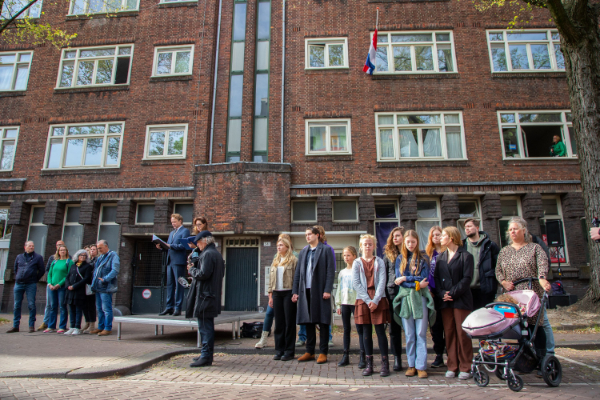
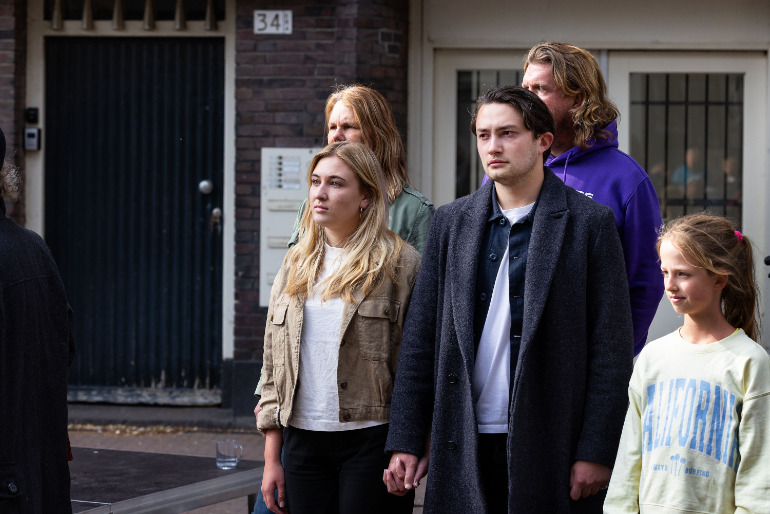
Daughter Terry stands there nodding. Yes, I thought it was very special too. To be
to be there, and to be a representative with my father and daughter. What
I personally felt, is that I walked away at the end, while my father and daughter
daughter remained standing. Then it really dawned on me that all those families are totally
torn apart, taken apart, mostly without knowing each other's fate. Also
there was real contact with the audience: I saw people crying, we felt and saw the
emotions of the spectators.
(Grand)daughter Joy also found it a special experience. She participated to set a
good example, she says proudly glowing. I learned at school that
terrible things happened in World War II. That Jews
were rounded up for no reason, thrown into concentration camps and
shot to death. So I think everyone should show them respect. Also
children. So with this I want to show that kids my age can also
can contribute.
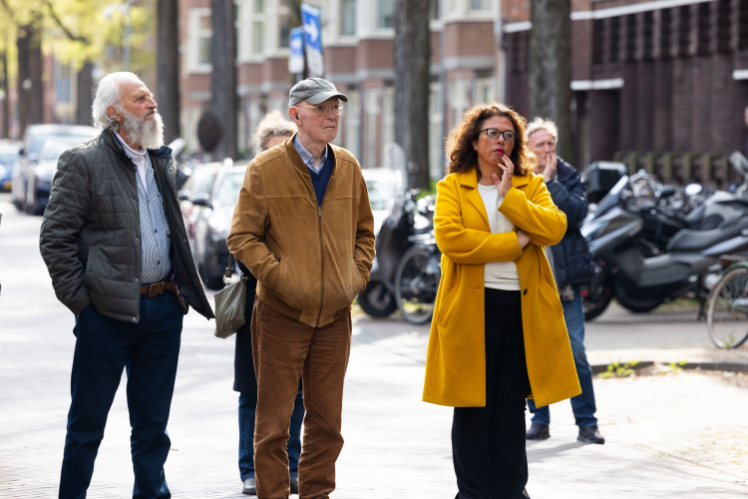
A Europe Full of Life
After a brief silence, Kees ten Dam brings his saxophone to the beautiful
sound. The sounds rise between the buildings until they evaporate into the air.
Whereupon creator and initiator of the commemoration, Nathalie Toisuta, closes this
this special afternoon.
She is content, her eyes twinkling. We spent a long time preparing for this
preparation for this she tells us. Two years, to be exact. That is how long it
took before there was enough enthusiasm and support, and we finally got the money together through funds.
funds. I had no idea how much impact it would or would not
have, but it has exceeded all my expectations. I saw little children
running away. Both my sons, who also participated in the set-up, running away. That is
unbelievable, right? That does something to you To really witness it, and
also to see the connection between the people and families who were standing there. We
go beyond the boundaries of life and death. That's what I wanted, what I envisioned
had: to honor people as they were as human beings. Not as war victims or as
dead person. Because you can identify with someone who is alive not with someone who is dead
is. Because the dead are already gone. So this brings it much closer, makes it
more real, and that has much more impact.
As to whether there will be Another Street Full of Life next year, Nathalie has a
resolute answer: Most definitely! To add: And then it will be
hopefully more streets. Who knows, maybe all of Amsterdam will participate the following year.
And then all of the Netherlands! My wish: that all of Europe will commemorate
commemorate our victims. Wouldn't that be incredibly beautiful?


